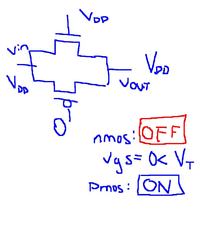brakchus
Newbie level 4
Hi, I have TG design as in the picture below:
**broken link removed**
while the enable and ~enable signals (at transistors gates) was from Virtuoso Analog Design Environment as stimuli signals, the output was just as I expected. After I added an inverter the output change. The result is in the picture below:
**broken link removed**
Can anybody give me a clue, why the output isn't always at gnd level? And sometimes even over vdd?
**broken link removed**
while the enable and ~enable signals (at transistors gates) was from Virtuoso Analog Design Environment as stimuli signals, the output was just as I expected. After I added an inverter the output change. The result is in the picture below:
**broken link removed**
Can anybody give me a clue, why the output isn't always at gnd level? And sometimes even over vdd?
